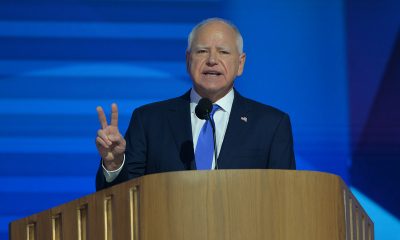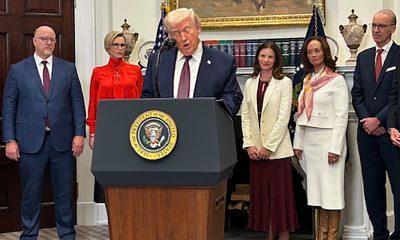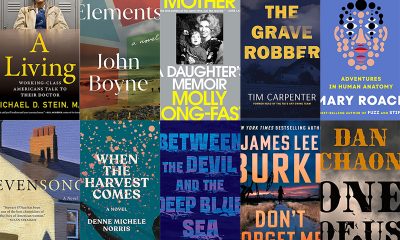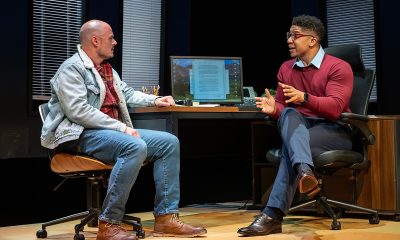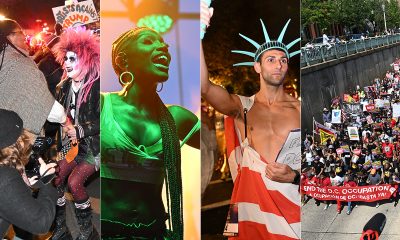Local
A conversation with Police Chief Lanier
Her thoughts on domestic violence, trans victims and putting the GLLU ‘out of business’
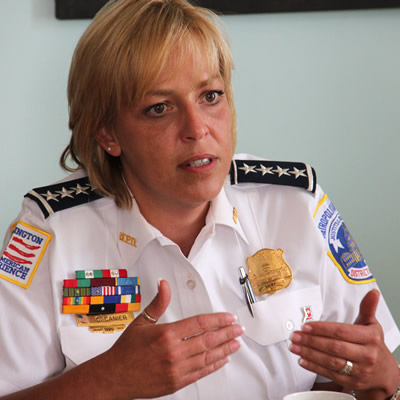
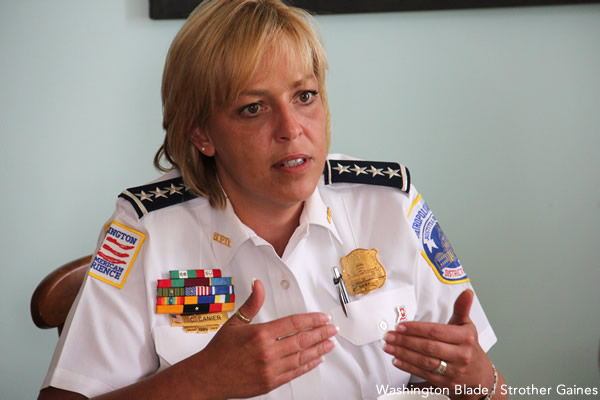
‘People are people regardless of their sexual orientation, your race, your gender, your religion … So my goal is to put the whole thing out of business,’ D.C. Police Chief Cathy Lanier said of the Gay & Lesbian Liaison Unit. (Washington Blade photo by Strother Gaines)
Editor’s note: Chief Lanier’s exclusive interview with the Blade covered a wide range of topics. Visit washingtonblade.com for the full transcript.
D.C. Police Chief Cathy Lanier said her decision to invite the Anti-Defamation League, a nationally acclaimed civil rights group, to conduct an independent assessment of how the department investigates and reports hate crimes was prompted, in part, by complaints from LGBT activists.
In an exclusive interview with the Washington Blade, Lanier said she believes the department is doing well in investigating and reaching out to the LGBT community in its fight against hate crimes, especially those targeting gay, lesbian and transgender residents.
But she cited concerns raised by some LGBT activists, including transgender advocate Jason Terry, a member of the D.C. Trans Coalition, who have questioned her and the department’s commitment to adequately addressing the city’s hate crimes problem. Terry has been among the activists who have criticized Lanier’s handling of hate crimes and other transgender-related matters during D.C. City Council hearings called to review police policies on hate crimes.
“I did it because a lot of times we compare ourselves with other law enforcement agencies,” Lanier said. “So we look at all the things we do and we say we think we’re doing really well. And then we go to a hearing and Jason Terry will say you’re a bunch of Keystone Cops,” said Lanier.
“And I go, ‘Wait a minute. I thought everything was going really well.’ And when we compare ourselves to other police agencies we’re light years above a lot of other agencies,” she said. “But you know sometimes just comparing yourself to other law enforcement agencies is not the mark. And so I thought I would have ADL tell me, ‘What is the mark?’”
Lanier took the unusual step of enlisting David Friedman, director of the ADL’s Washington, D.C., regional Office, to form a special task force to assess the department’s response to hate crimes.
Friedman invited the Human Rights Campaign, the nation’s largest LGBT civil rights group; the National Center for Transgender Equality; the Leadership Conference on Civil Rights, another nationally recognized mainline civil rights organization; and two university professors considered experts on hate violence to join ADL as members of the task force.
Among other things, the task force will look at how law enforcement agencies in other jurisdictions address hate crimes, a police statement said. The statement said the task force would begin its work by conducting interviews and meetings with LGBT community members to obtain their views on how D.C. police are doing in addressing local hate crimes that target LGBT people.
“What I’ve asked them to do and what we’ve all agreed is just come in and take a look at everything we’re doing and kind of grade us,” Lanier said.
New lead in beating of gay man
In a wide-ranging discussion on a number of other issues, Lanier told the Blade that police investigators have identified a person of interest in the March attack against a gay man on Georgia Avenue in the city’s Columbia Heights section.
The victim, who has asked not to be identified, was severely beaten and dragged by three or four male assailants, who punched and kicked him while shouting anti-gay names, causing him to suffer a broken jaw among other injuries, according to accounts by police and the victim.
“I think we will close that case,” Lanier said, noting that investigators are looking for a second person implicated in the attack in addition to the person of interest already identified.
That incident, which police listed as an anti-gay hate crime, along with the shooting of a gay man inside a nearby International House of Pancakes restaurant, also listed as a hate crime; and the beating of a transgender woman in Northeast D.C. – all occurring within a two-day period – prompted hundreds of LGBT activists and their supporters to hold a march and rally in the Columbia Heights neighborhood to condemn anti-LGBT violence.
Police have made an arrest in the IHOP shooting case, in which the victim suffered a non-life threatening gunshot wound. Police said no arrests have been made in the attack against the transgender woman, which police said was not listed as a hate crime due to insufficient evidence that it was motivated by hate.
In discussing the changes she has made with the department’s Gay and Lesbian Liaison Unit, Lanier said her ultimate goal is to ensure that all members in the department are trained to fully respond to LGBT-related issues, making the GLLU no longer necessary.
“People are people regardless of their sexual orientation, your race, your gender, your religion,” she said. “All that shouldn’t matter. So my goal is to put the whole thing out of business. In the meantime by spreading the affiliates around and putting more and more affiliates out there with the enhanced training there’s a better understanding that there really is nothing different about people.”
Lanier was referring to her creation of a GLLU affiliate officers program in which officers from the department’s seven police districts respond to LGBT-related police service calls to supplement and expand the work performed by the five full-time GLLU members based in the unit’s Dupont Circle headquarters.
The department says there are now 99 affiliate GLLU members, with 10 or more assigned to each of the seven police districts. Lanier said officers cannot become affiliate members of the GLLU until they complete a special training program.
‘Domestic violence is huge’
Lanier said that although hate crimes capture much of the attention in the LGBT community concerning police matters, incidents of domestic violence make up a far greater number of cases GLLU officers and police detectives in general are called on to investigate.
“Domestic violence is huge,” she said. “Every morning when I look at my crime reports there are two things that stand out that have been unusual over the last year. The number of domestic violence assaults of all kinds and, yes, in all communities, and the robberies. Robbery is huge,” she said in referring to citywide trends against all residents.
Following is a partial transcript of D.C. Police Chief Cathy Lanier’s June 26 conversation with the Blade. The interview was conducted at the home of gay activist John Klenert, who hosted the session and participated in the discussion:
Washington Blade: What do you expect the newly created task force on hate crimes to accomplish?
Chief Lanier: What I’ve asked them to do and what we’ve all agreed is just come in and take a look at everything we’re doing and kind of grade us. You’ve got some of the experts that David Friedman [of the Anti-Defamation League] has brought in who have helped draft hate crimes statutes.
So based on that, the way we capture them, the way we investigate them, the way we report them – are we missing the mark somewhere? If we’re missing the mark, yes, give me recommendations on how to go forward. In terms of the outreach, I’m not sure what they’re going to find. And again, I’m looking from a law enforcement perspective. They may come back with some completely different recommendations about how we do outreach that’s not based on a law enforcement model at all.
But what we’re looking for is – How are we doing? And what is it we’re missing? And what are the recommendations? How can we improve that so that everybody else feels like we’re doing as well as we feel like we’re doing?
Blade: By outreach, do you mean alerting people in the community that a hate crime has taken place?
Lanier: Well that’s a good question isn’t it? For us, outreach has always been – in every community – one is getting information to people about what’s going on crime wise, how can you product yourself? What are the crime trends so you know what you need to protect yourself from? And then receiving information back from people in the community about what are they seeing and how do they feel about our response. So it’s kind of a two-way communication. That’s the biggest part of outreach. I think we’re doing that. We report everything. We hear back from the team members in the community in a variety of ways through the multi-team meetings and through email.
But the real outreach is kind of us doing things jointly. So in terms of hate crimes it’s great that we report it. It’s great that we have relationships with advocates. And I have exactly the same scenario going on right now in sex crimes in general related to sexual assaults in the city. We have these great relationships with all these advocates. We meet monthly. We exchange information two ways.
But what are we doing jointly to prevent these crimes to start with? We have a great team that discusses how we respond to it. But what are we doing to prevent it? So when I think of outreach I think having some of the advocate groups go out with us.
John Klenert: Who determines whether an incident is a hate crime? Is it the Attorney General?
Lanier: It’s the United States Attorney.
Blade: Don’t the police make the first call on whether a hate crime has occurred in the police report known as the 251 Report?
Lanier: We do mark it on the 251 but that is irrelevant as to whether they classify it as a hate crime. It’s not always apparent in the initial investigation. The initial investigation is, say when an arrest is made, when an arrest is made on the scene the investigation is just beginning. That’s just the preliminary. Did you break the law? Is there a violation of the law here? From there it becomes this lengthy investigation – grand juries, all those things – that’s where the determination is made whether they’re going to place actually the enhanced penalty of a hate crime.
It’s not something we have any control over. So that creates a little tension for us. And we’re a lot more visible and up front than the United States Attorney’s office….I’m not saying anything bad. But it’s the nature of our business. We’re at the front end. So we’re where people interact and see all the time. Very few people interact with the U.S. Attorney’s office.
Blade: Aren’t there some cases that the police list as hate crimes and the U.S. Attorney’s office doesn’t? One example may be the Marine who was stabbed to death near the 8th and I Street Barracks, where the accused man called the victim an anti-gay name.
Lanier: Here’s the challenge that they [the U.S. Attorney’s office] have. And believe me; I don’t often defend the United States Attorney’s office. Our standard is probable cause. So if you look at a continuum of what you need to charge somebody with a crime – with reasonable suspicion you can stop somebody and detain them. With probably cause you can now place them under arrest. Arrest is not guilt, it’s just we have probable cause. And then the United States Attorney’s office has to take that and continue to push until they get to a point where they feel like there’s high probability of conviction.
When there’s not a high probability of conviction they have trouble going forward, not just because they like their conviction rate but because judges are not going to push the case through. So they have a much higher standard than we do. I have to give them that. And I know because once we make that arrest my detectives are working around the clock to help them get to where they need for beyond a reasonable doubt. And there’s a big jump between probable cause and beyond a reasonable doubt.
Blade: Do they sometimes consult the police when they are deciding whether to offer a plea bargain and lower the charge in a case?
Lanier: No, we do not consult on pleas. Obviously we’re the police. When we make an arrest we feel like we’ve got the right person. Again, they’ve got to get to a jury or a judge to get to beyond a reasonable doubt. And all these little things can create reasonable doubt.
Blade: Concerning the department’s Gay and Lesbian Liaison Unit, can you say where it stands now in terms of the changes you set out to make when you became chief? You made it clear you wanted some changes by adding affiliate GLLU members from the police districts. Is that complete at this time?
Lanier: Well it’s still going. We have a core group of five officers that are fully assigned – that’s their only assignment. And then we rotate the new affiliates. We rotate a couple of affiliates in for 90 days. When they come out of training two will rotate in. They will stay there full-time for 90 days and then they’ll rotate back out.
Blade: Do GLLU officers have to go through a class to be an affiliate member? Are you able to do enough of those? Isn’t that where GLOV [Gays and Lesbian Opposing Violence] provides trainers for the classes?
Lanier: They are. And that came out of the meeting here also [meeting between Lanier and community activists]. It was [transgender activist] Ruby [Corado]. Ruby just told this heart-wrenching story on the day I was here. And I said look, if you can tell that story yourself to the police officers you will completely change their perception in how they interact with people. It was a terrible story she told. And she said OK, I’ll do it. And that’s how the whole concept came about and others said we’ll help too. Now they’re at a point where they’re a little frustrated. They want to get paid.
Blade: They’re hoping to get a city grant to cover their costs.
Lanier: Right and the deputy mayor is looking into that. But the recommendation that came out of the meeting last week with the deputy mayor is that there are other city agencies that need to be educated on LGBT issues as well. It’s not just the police. And if we’re talking about grant funding for organizations to train [we should] put together a more comprehensive approach for all city employees because a person who is either insensitive or not familiar with LGBT issues who’s working in any branch of government isn’t that a problem?
Blade: Some sources are saying there’s a perception now that the GLLU officers are not doing the direct law enforcement work they had been doing in the past. They’re saying GLLU officers are no longer investigating cases, they’re no longer making arrests, interviewing witnesses or victims, and –
Lanier: There are too many cases for five people to handle – honestly.
Blade: Are they the only ones that can do that?
Lanier: No, no, no, no…The GLLU folks are not detectives. Remember now a detective is on a whole different career track in MPD. There’s a lot of work that goes along with being a detective. And investigating crimes should be done by a detective. And believe me that’s what the United States Attorney’s Office wants because the detective is the one that’s going to go through with the prosecution – all those steps I talked to you about – about building beyond a reasonable doubt.
Detectives do that. Uniformed officers do not for the most part. So certainly there’s no possible way that a group of five or seven or even 10 GLLU core members could do all those investigations. You wouldn’t have a quality investigation if they were trying to do them all. They should go to the district detective unit where the crime occurs.
Remember, the ultimate goal here at the end – I hope that someday we don’t need a LGBT anything. People are people. Police officers should be investigating, reporting, patrolling, managing crime regardless of who the suspect is and regardless of who the victim is.
So you know the whole goal is to put the whole thing out of business so that there’s no internal discrimination, so there’s no external discrimination. People are people regardless of their sexual orientation, your race, your gender, your religion. All that shouldn’t matter. So my goal is to put the whole thing out of business.
In the meantime by spreading the affiliates around and putting more and more affiliates out there with the enhanced training there’s a better understanding that there really is nothing different about people.
Blade: What can you say about whether some or most of the GLLU affiliate officers are gay?
Lanier: Some are gay; I would say about 60 percent are but not all.
Blade: So there are straight cops that don’t mind being part of the GLLU?
Lanier: Not at all. They volunteered. That’s all voluntary. And we have a group of volunteers for every class. I mean, it’s 2012. I don’t know anybody who doesn’t have friends or family members. We’re people just like everybody else. We all have family and friends that are alcoholics, drug addicts, you know, white, black, whatever.
Blade: In terms of the guidelines for the GLLU, did somebody say recently – it might have been Deputy Chief Diane Groomes, that the GLLU members are not supposed to take official statements at the time they may interview a victim or something like that?
Lanier: They shouldn’t be getting statements from suspects until the detective is on the scene. That’s the case for any crime because if we’re going to go forward with a prosecution, if we have a suspect on the scene, there’s procedures that they follow to make sure that statements that are made are not excluded. And we want detectives to handle that. That’s for every crime. People will spontaneously make statements and we will copy them down. But in terms of debriefing and interviewing that’s the detective’s job.
Blade: Can you tell a little about a few incidents that happened in recent years where homophobic graffiti and anti-gay fliers were found in a few of the police districts, including the Third District?
Lanier: There was one in the Third District against an officer that I love dearly, one of the best police officers I’ve ever worked with. And he’s one of the most loved officers in the police department. Whoever did that, it really outraged a lot of people. And sometimes these cops that make these insensitive – you know, what they think are funny jokes or gestures – that’s got to stop because that’s not funny. So that’s why I spoke about that one. The other one at 5-D was Jehovah Witness literature. It was left in the station [by a member of the public].
Blade: The only other one we know about took place at the traffic division station – a flier with a photo making fun of one or two male officers saying they got married.
Lanier: It was in the major crash unit. It wasn’t a gay officer. I can tell you that cops make stupid jokes and it’s inappropriate. But I can tell you I have been here a long time and I’m still the majority on the police department now, my whole crew. I came on in ’89 or ’90. So the bulk of the department and my group is the biggest group and I’ve worked with them for many years. I can tell you the department has changed an awful lot. Women and a lot of people that were in the clique, old school, were treated very, very poorly over the years. This is a very different police department.
Blade: Are you saying these incidents are taking place less frequently?
Lanier: Do we have isolated people who have their own biases? Yes, sure. Do they act out inside the police department for others to see them? Extremely rare, extremely rare. I’m sure there are people out there policing who have biases we don’t even know about. What I’m saying is they know that there is no tolerance for it in the police department and they could lose their job for it. So you don’t see that outward bias inside the police department. Plus, like I’ve said, things have changed so much. I don’t know anybody that doesn’t have friends in just about every community. It’s just different now.
Klenert: Do we have any Muslim cops?
Lanier: Oh, sure. And I just signed off to let the Sikh community keep their religious scarf. They have been prohibited from policing and in fact they’re suing in New York. So I just signed an order to allow the Sikhs to keep their beards and their turbans.
Blade: In terms of the incidents we were talking about, did anything ever come of the investigations? You said at the time that the Internal Affairs division was investigating them.
Lanier: There was no discipline for the Jehovah Witness literature. It was put there. It should have been thrown out. We don’t know how long it was there. And still today they come through the station and they put literature there and we just throw it away because we can’t have any religious stuff there.
Klenert: Are the police up to full force?
Lanier: We’re at 3,900. At one point we were up to 4,100 and because of the budget cuts it dropped down. We were down below 3,800 for a while. So we’re back up to 3,900 now. I can tell you that this city is exploding.
Klenert: There are a lot of people moving in.
Lanier: I just did an analysis of the number of alcohol licenses. Another thing I’m looking at very closely is the alcohol-related assaults. I said let me see the top 10 locations that have the highest clusters of alcohol licenses. How many ABC licenses do you think there are in two blocks in Adams Morgan?
Klenert: About 40?
Lanier: Very good. It’s 38. So that’s like the gold mark. That’s like the most alcohol establishments you can cram into two blocks. I’ve got another block that’s got 36 in a three-block area. I’ve got another block that’s got 18. So now I’ve got at least 10 little Adams Morgans around the town. H Street, N.E., like I say. The U Street corridor I think has 36. So those are all things that if the city is going to keep thriving – if you go down there on weekends it’s Maryland and Virginia tags. People are coming from all over. Our nighttime population is as big as our daytime population…
Blade: What are your thoughts on the mayor’s proposal to allow the bars to stay open an extra hour during the week and on weekends?
Lanier: Here’s my take on that. Honestly, with all the interactions I have, I have the authority to do emergency closures [of bars] on a very limited basis. And I can tell you the bars I’ve had to close on an emergency basis – it’s the same bars over and over – or it’s the same owners. So either the bars are managed very well, which means they don’t over serve. They don’t bring in entertainment that they know has difficult followers. They have good security. I never have a problem with 85 percent of those businesses in this city. I never have a problem. They can stay open around the clock and I’d never have a problem. The ones that have a problem, they are going to be a problem all the time.
Blade: Regardless of how late they can stay open?
Lanier: That’s exactly right. Now in a neighborhood like this, would I want them stumbling through my neighborhood at 4 o’clock as opposed to 3 o’clock? That might be a problem. Crime wise it’s not a problem. I think disturbing people might be a problem.
Blade: Looking at the type of crimes I see reported by the GLLU in the crime reports we receive from Capt. Edward Delgado, who oversees the GLLU, it seems like domestic violence is far more prevalent than hate crimes. Is domestic violence the single most frequent type of case the GLLU gets calls for?
Lanier: It is. Domestic violence is huge and even though we’ve had – I said this to someone. Three years ago 20 percent of all murders were domestic violence related, which is dramatic. That’s a lot.
Blade: Is that across the board?
Lanier: It’s across the board, across the city. And we’ve been able to bring it down. We’ve only had three domestic violence murders this year. Unfortunately, two of those were children, infants. So we’ve put a couple of pilot programs in place to try and reduce domestic violence lethality and it’s worked. It’s called lethality assessment for high-risk domestic violence cases. But the number of actual assaults is just phenomenal.
Blade: Do you mean the number of domestic violence related assaults?
Lanier: Yeah. Every morning when I look at my crime reports there are two things that stand out that have been unusual over the last year. The number of domestic violence assaults of all kinds and, yes, in all communities, and the robberies still. Robbery is huge.
Blade: Are the two about the same or would you say domestic violence is a little higher?
Lanier: It’s street robberies that are high right now.
Klenert: But the murder rate is down, isn’t it?
Lanier: It’s way down … So right now if our trends hold – we’re at 40 murders today and we’re going into the seventh month. If our trends hold we’ll come in not only under a hundred but well under a hundred, under 80. …
Blade: The number of LGBT murders are also way down since the 1980s and 1990s. Do you have any idea why that is?
Lanier: I think it’s the culture of violence itself. I think in the culture of violence we’ve finally broken through. I think of the whole tipping point thing. We had to get to a tipping point where not only did we as a city but particularly as a police department say we can prevent murders and we’re going to and not, ‘Well, we can’t stop murders,’ which used to be our mentality and also sending that message to the criminal population.
Blade: You’ve said in the past that under some circumstances the department might not identify a murder victim as being gay on grounds of privacy. But have there been murders of gay men recently that we don’t know about because they’re not identified as such?
Lanier: I can’t think of any off the top of my head – no. But this is the hard part for me. If something happens in an area where there’s a lot of transgender prostitution, the first question from the advocates is was that a gay person or a transgender person? It’s not really my right to tell people somebody’s sexual orientation. And to a certain extent, people do deserve a little bit of privacy. We had a little bit of tension with the advocates in one of the transgender cases because a family member gave us a photo to use for the flier and the photo was pre-transition. That’s what the family wanted. How do I go back to mom and say I know this is the photo you want me to use, mom, but the advocates are up in arms because we didn’t use this picture? I’m going to respect the family. That’s really my tough decision but that’s my job. Whatever the next of kin expresses they want I have to honor that. And the advocates don’t understand that sometimes. They think we’re just being insensitive or at the very least we should show both photos. But you know I’m a mom. If that’s what the mom asks, how can I not do that?
Blade: That becomes difficult for the LGBT community because in some cases there is homophobia on the part of the parents and the child who may have been murdered was estranged from the parents.
Lanier: If we had a situation where the parents said no we don’t want that to be a part of this but we thought it would be important for us to put that out to the public to help us close the case, we would go back to mom and say look, I know you don’t want this out there and you don’t want this to be the last photograph of your son or daughter or whatever – I don’t think we have as good a chance of finding the killer unless we do this. And I would make that plea. But if I don’t think it’s relevant to closing the case then I’m going to respect the family. It’s a fine line, it really is. It’s a difficult line for us to walk…
Virginia
LGBTQ groups to join Spanberger inaugural parade
Virginia Pride among more than 25 orgs to march in Jan.17 event
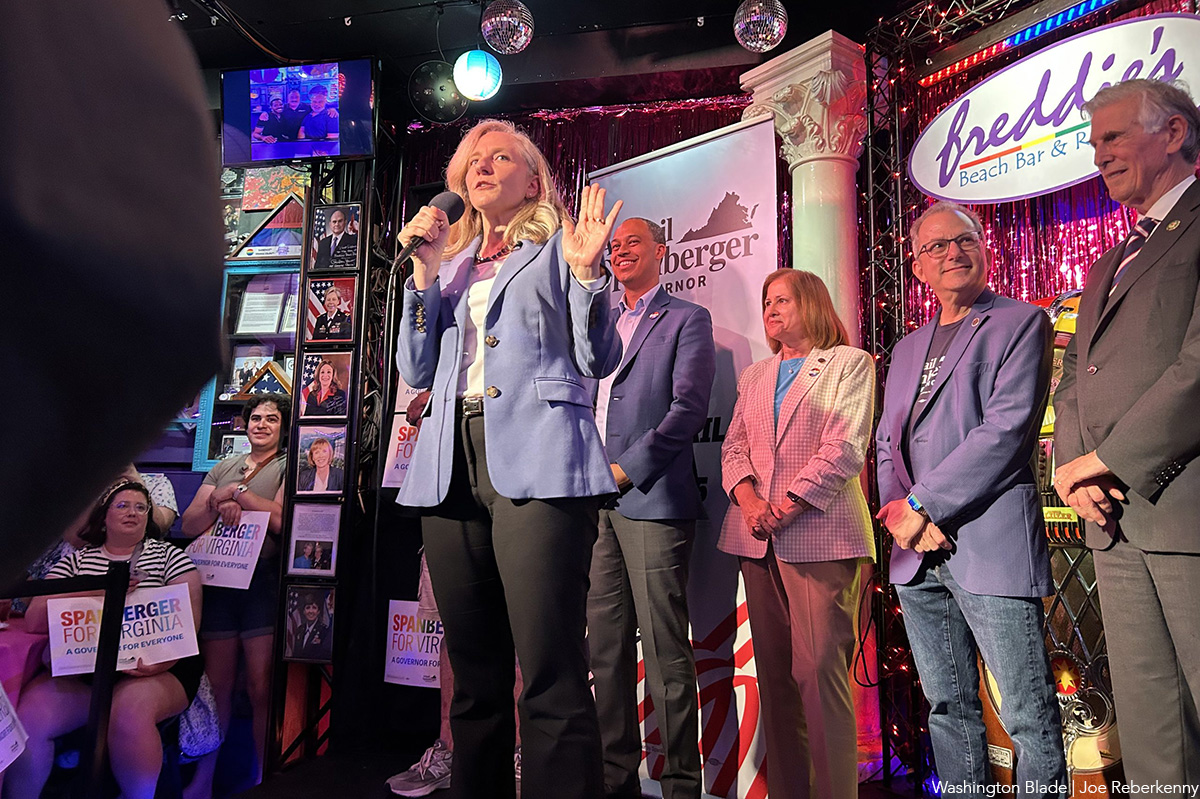
Virginia Gov.-Elect Abigail Spanberger’s inaugural committee announced on Jan. 2 that at least two LGBTQ organizations will be among more than 25 state-based organizations, including marching bands, that will participate in her inaugural parade on Jan. 17.
A statement released by the inaugural committee says the parade will take place immediately after Spanberger is sworn in as Virginia’s 75th governor and delivers her inaugural address in Richmond.
The statement lists the LGBTQ groups Equality Virginia and Diversity Richmond as two groups participating in the parade, although the two groups merged in 2021, with Virginia Pride becoming a project of Diversity Richmond. Among other things, Virginia Pride organizes Richmond’s annual LGBTQ Pride events.
“A display of the impressive talent and beauty of every corner of Virginia, our inaugural parade will be a celebration of all that makes our Commonwealth strong,” Spanberger said in the Jan. 2 statement. “I’m excited for attendees in the stands on Capitol Square and families watching together at home to see this incredible showing of Virginia pride,” she said.
James Millner, who serves as executive director of Virginia Pride, told the Washington Blade about 75 people are expected to join the Virginia Pride-Diversity Richmond contingent in the parade. He said among them will be members of other Virginia LGBTQ organizations.
“We’re going to invite our staff, our board, our volunteers, and our community partners to join us,” Millner said.
“We are thrilled and honored to have been invited to participate in Abigail Spanberger’s inauguration festivities,” he added. “I think this represents a marked change from the previous administration and demonstrates what she campaigned on – which is she sees the diversity of the Commonwealth as a strength that needs to be celebrated,” he said. “And we are very happy that she has invited us to represent the diversity of the commonwealth.”
Millner appeared to reflect on the sentiment of the large majority of Virginia’s LGBTQ community in its support for Democrat Spanberger over Republican Lt. Gov. Winsome Earle-Sears in the November 2025 Virginia election and the end of incumbent GOP Gov. Glenn Youngkin’s term in office on Jan. 17.
“After what we’ve been through with the Younkin administration, especially in its treatment of LGBTQ folks, especially transgender and nonconforming folks, I think we are all breathing easy and excited about what opportunities will exist in working with Abigail Spanberger,” he told the Blade.
District of Columbia
Two pioneering gay journalists to speak at Thursday event
Blade’s Chibbaro, Falls Church News-Press’s Benton talk long careers
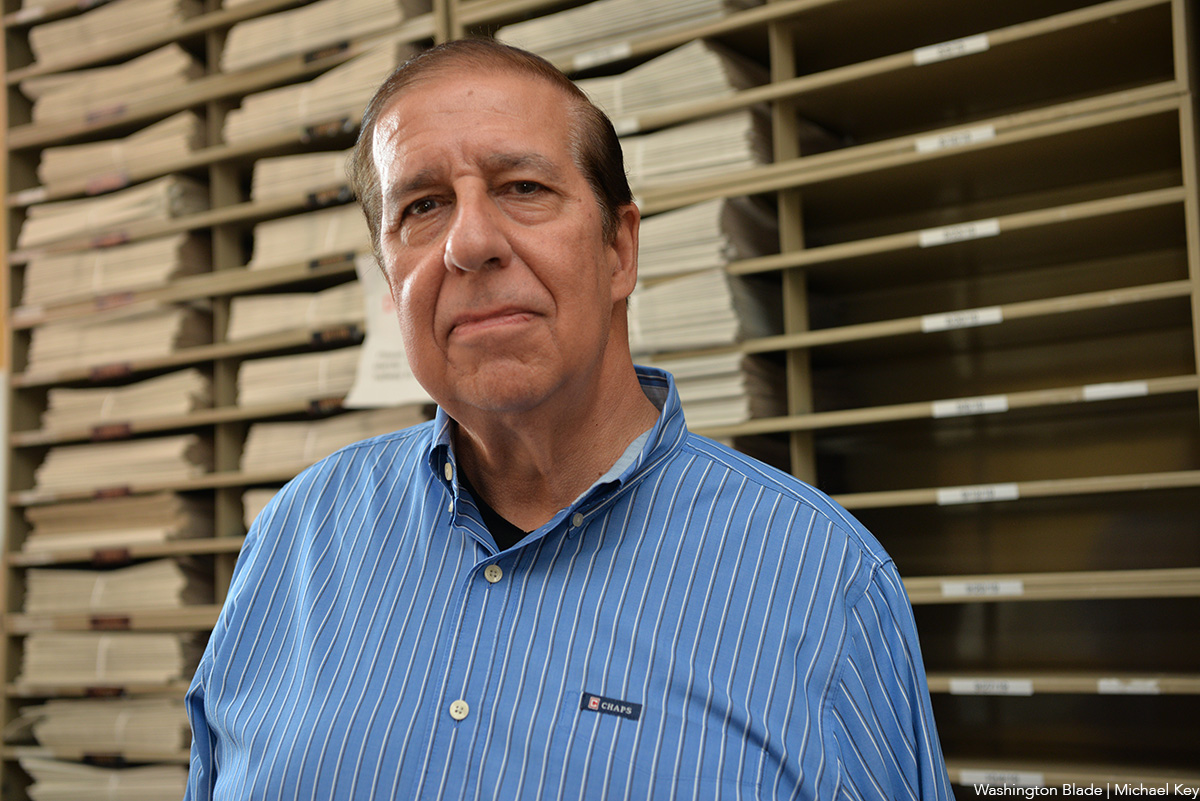
Two local gay journalists will speak on a panel this week about their long, pioneering careers.
A celebration of the Falls Church News-Press’s Nicholas Benton and the Washington Blade’s Lou Chibbaro Jr., two trailblazing LGBTQ journalists who have spent decades reporting on the front lines of social, cultural, legal, and political change in America, will be held this Thursday, Jan. 8, at the Women’s National Democratic Club of Washington. D.C., 1526 New Hampshire Avenue, N.W., at 6 p.m., according to a statement from organizers.
The program will explore their journeys, the evolution of LGBTQ journalism, and the ongoing fight for equality and justice. Benton and Chibbaro will also examine the various factors causing many news outlets to cease print publication and their energetic efforts to continue publishing their work both in print and online.
EVENT DETAILS:
- Remarks and Q&A, in-person and via Zoom.
- 6 p.m. complimentary hors d’oeuvres and cash bar; 6:30–7:30 p.m. program followed by book signing.
- Zoom only: $10. In-person: members: $20, nonmembers: $30 plus tax.
Benton’s latest book, “Please Don’t Eat Your Children, Cult Century, and Other Essays,” will be available for purchase at the event.
Benton is a longtime local journalist and LGBTQ rights activist whose work has had a lasting impact on both community journalism and social justice. Author of the first-ever editorial in the pioneering Gay Sunshine newspaper in 1970, he is best known as the founder, owner, and editor of the Falls Church News-Press, an independent weekly newspaper he launched in 1991 and is the paper of record for the City of Falls Church, Virginia.
Chibbaro is the senior news reporter for the Washington Blade and a pioneering journalist in LGBTQ news coverage. He has reported on the LGBTQ rights movement and community continuously since 1976, first as a freelance writer and later as a staff reporter, joining the Blade in 1984.
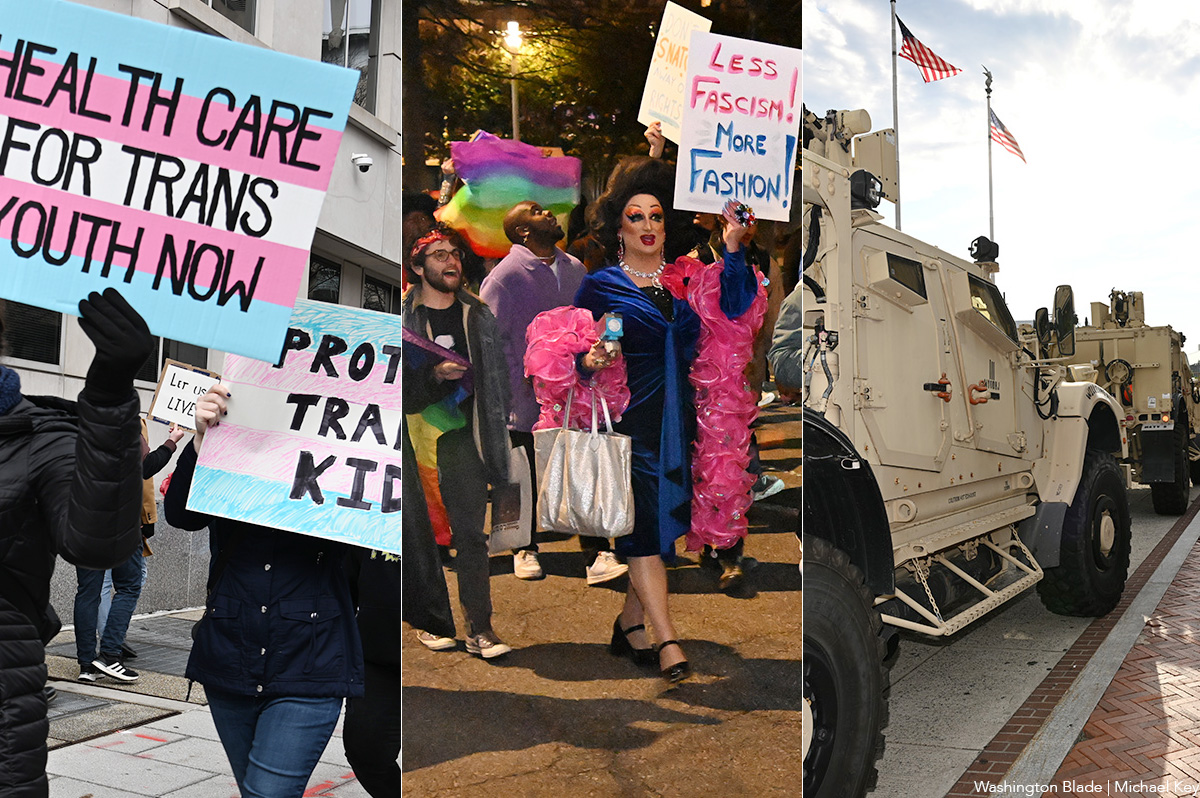
The year 2025 brought unprecedented challenges to D.C. as President Trump initiated a takeover of local police operations and implemented ICE raids in the city. Below are our picks for the top 10 LGBTQ news stories of the year.
10. Man gets 15 years for drug sale that led to deaths of two gay men
A D.C. man was sentenced by a federal judge on June 26, 2025, to 15 years in prison after he pleaded guilty three months earlier to conspiracy related charges that he distributed large amounts of fentanyl and cocaine in the D.C. area, including the sale of fentanyl that resulted in the December 2023 deaths of two D.C. gay men.
A statement released by the Office of the U.S. Attorney for D.C. said Jevaughn Mark, 33, was charged, among other things, with selling fentanyl rather than the requested ketamine, known as “Special K,” to one of the two gay victims who shared the drug with his gay friend. Police identified the men as Brandon Roman, 38, a prominent D.C. attorney and LGBTQ rights advocate, and Robbie Barletta, 28, a home renovation business owner and historic preservationist.
An official with the D.C.-based group HIPS, which provides services to drug users, called the deaths of the two men a poisoning rather than an overdose because they unknowingly consumed the highly toxic fentanyl rather than the ketamine they thought they had.
9. Drag queens, protesters denounce Trump’s Kennedy Center takeover
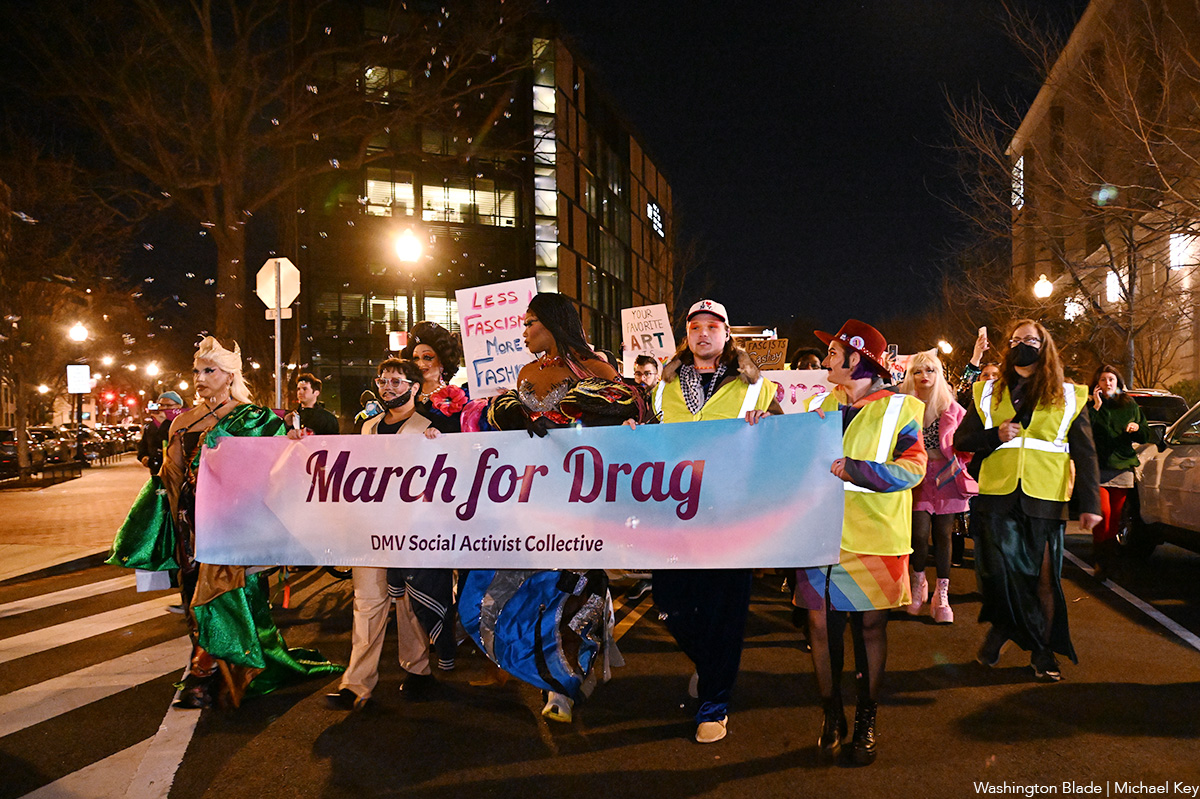
D.C. drag performer Tara Hoot was among other drag queens and about 100 supporters who marched in February from Washington Circle to the Kennedy Center to protest President Donald Trump’s Kennedy Center “takeover” by his appointment of Trump supporters to the performing arts facility’s board of directors.
Hoot and three other local drag performers followed up with their own Kennedy Center protest in June by attending the Kennedy Center’s opening night performance of “Les Misérables” while Trump himself was in attendance. Among the concerns raised by the protesters was the Kennedy Center’s decision in February to cancel a performance by the Gay Men’s Chorus of Washington scheduled for May to celebrate the upcoming WorldPride 2025 DC events. A Kennedy Center spokesperson said the performance was canceled because of “financial” and “scheduling” factors and not by the Trump initiated management changes.
8. D.C. LGBTQ Center celebrates opening of new, larger offices

The D.C. LGBTQ+ Community Center officially opened its new expanded offices on April 26 at 1828 Wiltberger St., N.W., located one block from the Shaw Metro station.
Spanning 6,671 square feet of intentionally designed space, Center Director Kimberley Bush said the new space would offer a wide range of resources for LGBTQ individuals in need – including mental health services, job readiness programs, cultural events and community support groups, all under one roof.
7. Deaths of five key local LGBTQ advocates in 2025
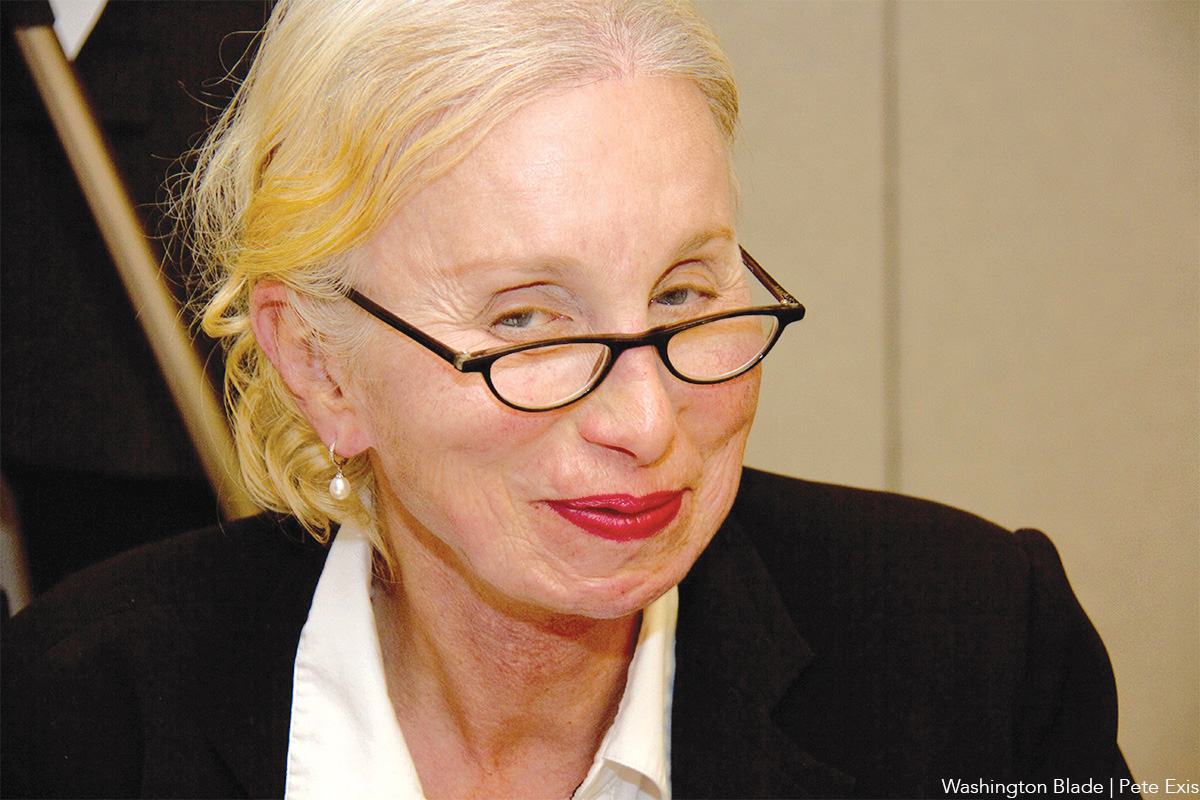
The LGBTQ community took note of the passing of at least five highly regarded local LGBTQ advocates in 2025. Among them were Jeri Hughes, 73, a longtime local transgender rights activist; Dale Sanders, 75, a highly acclaimed D.C. attorney for more than 40 years who played a leading role in providing legal services to people with HIV/AIDS; Patrick Shaw, 60, a highly regarded D.C. public schools teacher; Thomas Mangrum, 61, an acclaimed advocate for people with disabilities and LGBTQ rights activist involved in the city’s Capital Pride events; and Loraine Hutchins, a nationally known and acclaimed advocate for bisexual and LGBTQ rights, and co-author and editor of a groundbreaking book on bisexuality.
6. Pro-LGBTQ Spanberger elected Va. governor
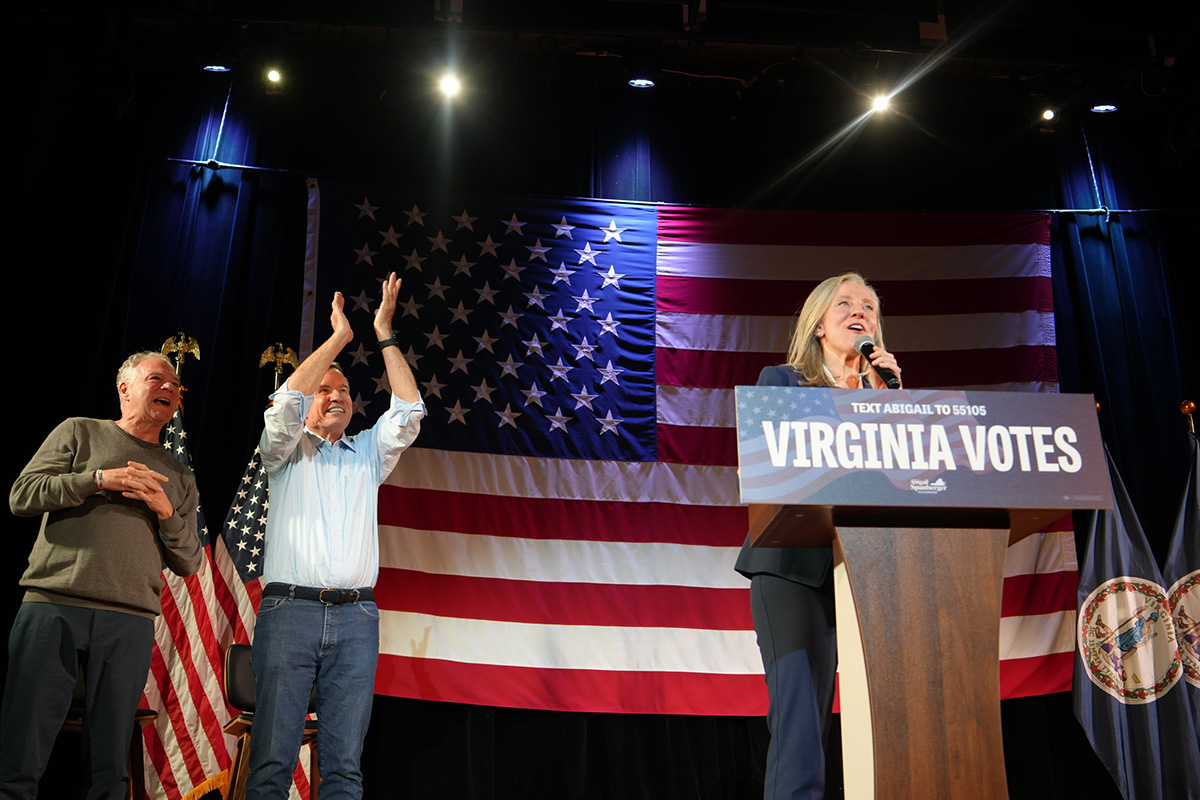
Former congresswoman and longtime LGBTQ rights supporter Abigail Spanberger (D) won her race for governor of Virginia on Nov. 6, defeating the state’s Republican lieutenant governor, Winsome Earle-Sears, who expressed strong opposition to LGBTQ equality. Spanberger, who will succeed incumbent GOP Gov. Glenn Youngkin in January, becomes Virginia’s first female governor.
Meanwhile, John Reid, a gay conservative radio talk show host in Richmond for many years, lost his race as the Republican candidate for lieutenant governor in Virginia, falling short of becoming the state’s first openly gay person to win a statewide office. Reid lost to Democrat Ghazala Hashmi, a member of the Virginia State Senate, who became the first Muslim woman to win election to a statewide office in any state.
5. Trans erasure hits D.C.
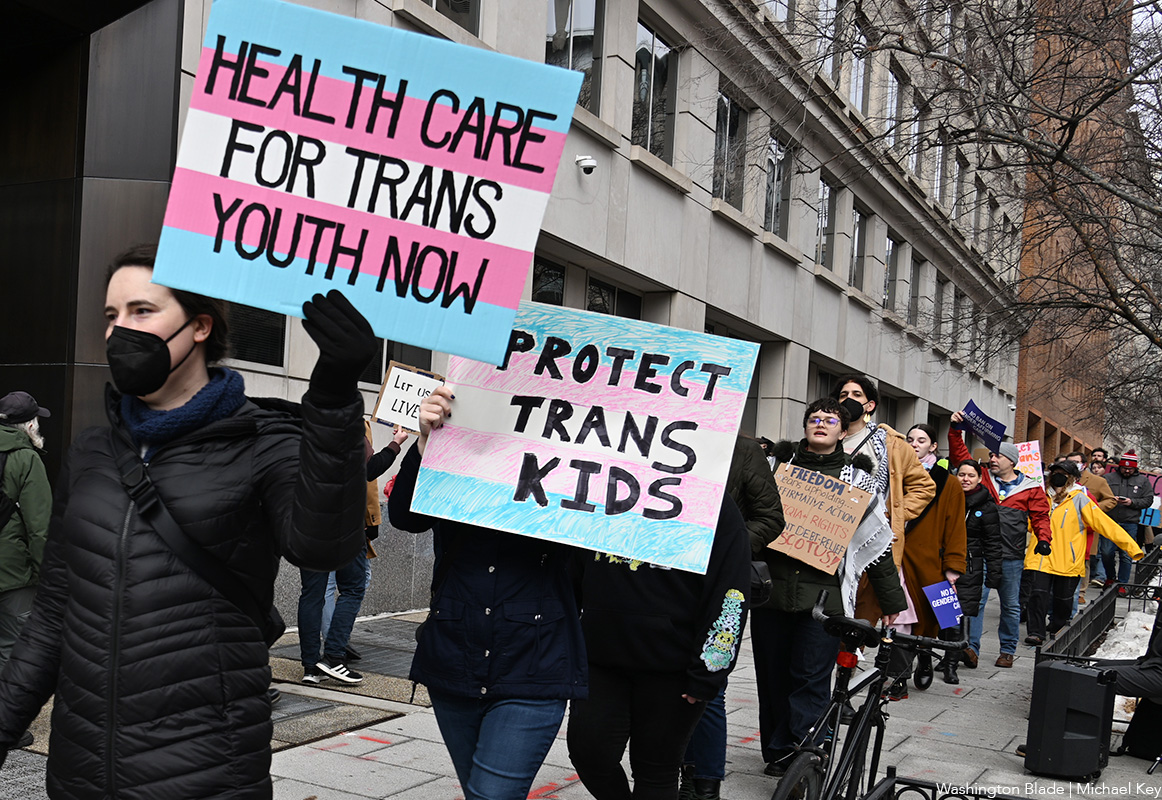
The National Park Service, which owns and maintains Dupont Circle as a federal park, in February removed all references to transgender people from its website devoted to Dupont Circle history. In a development believed to be linked to one of President Trump’s early executive orders banning federal support for trans related issues, the Park Service removed all mention of trans people from its website but left on the site multiple references to the “GLB community.”
In yet another act of what LGBTQ activists are calling “trans erasure,” D.C.’s Children’s National Hospital in July announced it would discontinue beginning Aug. 30 gender transition medical care it has provided for juvenile patients for at least the past 20 years. In a statement posted on its website, the highly acclaimed pediatric hospital said the change was made “in light of escalating legal and regulatory risks to Children’s National.” Most observers interpreted that to mean the risk of federal funding cuts linked to the Trump administration’s animus toward trans supportive programs or policies.
4. D.C. Mayor Bowser announces she will not run for re-election

D.C. Mayor Muriel Bowser, a longtime vocal supporter of the LGBTQ community, announced on Nov. 25 that she will not run for a fourth term. Since first taking office as mayor in January 2015, Bowser has been an outspoken supporter on a wide range of LGBTQ-related issues, including marriage equality and services for LGBTQ youth and seniors.
LGBTQ activists have pointed out that Bowser’s record of support on LGBTQ issues dates back to her tenure as the Ward 4 D.C. Council member from 2007 through January 2015, when she took office as mayor. They also credit her with expanding and significantly increasing funding for the Mayor’s Office of LGBTQ Affairs and appointing the largest number of openly LGBTQ officials to D.C. government jobs than any prior D.C. mayor.
“It has been the honor of my life to be your mayor,” Bowser said in a statement.
3. D.C. LGBTQ bars ‘hanging in there’ amid tough economy

The owners of several of D.C.’s at least 25 LGBTQ bars told the Blade in November they had been negatively impacted by a series of developments and issues impacting most other D.C. bars, restaurants, and nightlife venues. Among the lead issues impacting them, they said, were the deployment by President Trump of National Guard troops on city streets, the nearly two-month-long federal government shutdown that ended in late November, and skyrocketing prices of food and other supplies brought about by the Trump administration’s tariff program.
Other factors cited were a decline in tourist visits to D.C. due to alienation from the Trump administration and a large increase in the number of LGBTQ bars in recent years that some observers said has resulted in fewer people going to each of the LGBTQ bars, the latest one, Rush at 14th and U Street, N.W., having opened in December.
2. At least 1.2 million turn out for WorldPride D.C.
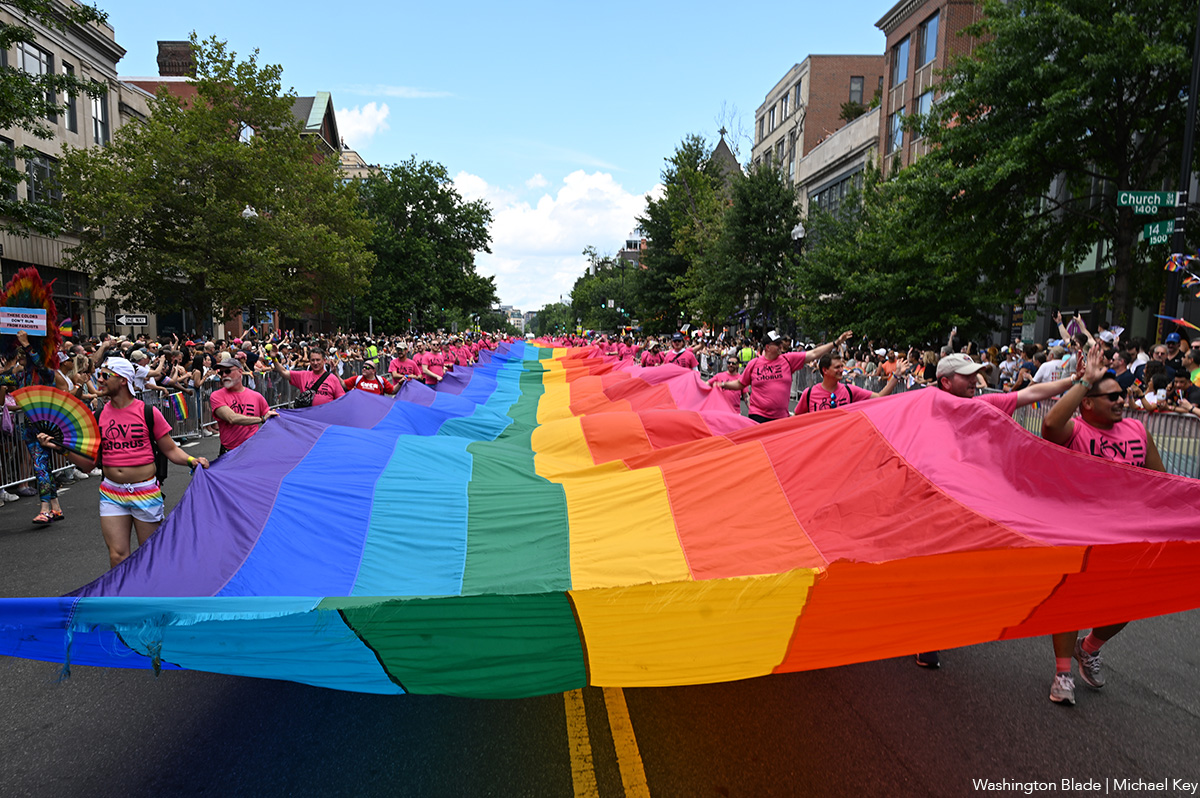
At least 1.2 million people turned out from throughout the U.S. and internationally for WorldPride D.C. 2025, which took place from mid-May through June. It included hundreds of events held across the city. Among them were an international human rights conference, a March on Washington for LGBTQ Equality, sporting events with LGBTQ athletes, concerts by LGBTQ choral groups and nationally acclaimed pop musicians.
The events culminated with a six-hour-long WorldPride Parade on June 7 that drew hundreds of thousands of participants and bystanders and included a 1,000-foot long rainbow flag that led the parade. The WorldPride street festival and concert took place that same day and the following day, on June 8, along Pennsylvania Ave, N.W. that included hundreds of booths.
The 1.2 million attendance and the a $310 million economic impact it had on the city were significantly less that what had been initially predicted by city officials, who, along with LGBTQ activists, said the lower attendance and economic impact was due in part to the anti-LGBTQ policies and alienation of many potential foreign visitors by the Trump administration.
1. Trump takes control of D.C. police, deploys National Guard

LGBTQ rights advocates joined community leaders across the city in condemning President Donald Trump’s decision in August to take control of the D.C Metropolitan Police Department and deploy 800 National Guard troops to address what he called a crime wave caused by “bloodthirsty criminals” and “roving mobs of wild youth.”
A coalition of local LGBTQ advocacy organizations joined other community leaders, including gay D.C. Council member Zachary Parker (D-Ward 5), in calling Trump’s action a “power grab” aimed at eliminating D.C.’s locally elected government that would adversely impact people of color, the LGBTQ and immigrant communities.
In a development that captured national attention, a gay man was arrested on Aug. 10 on a misdemeanor assault charge for tossing a hero sandwich into the chest of a uniformed U.S. Customs and Border Control agent on a street near several gay bars in what he called an act of protest and defiance of the Trump deployment of federal troops and agents in D.C. In what some observers called a gesture of support for gay sandwich thrower Sean Charles Dunn, a federal court jury handed down a verdict of not guilty for the assault charge.

